Rediscovering the past in Dominica's jungle

Sy-tucanon
Philip Fearnhead
Thu 6 Mar 2014 14:25
|
Thursday 6th March 2014: Position
15:34.87N 061:27.71W
After a brief stop at Roseau, Dominica’s capital, we continued north to
Portsmouth on the NW corner of the island the following morning.
Portsmouth had once been the capital of Dominica, but the capital was moved to
Roseau to escape the malarial mosquitos (largely eradicated since the
1940s). Here on the lovely Prince Rupert’s Bay is the estuary of the
Indian River, so named because the early European arrivals (privateers like
Hawkins, Drake and Grenville) used to trade with the Kalinago/Carib indians who
lived here in the 16th Century. A century later, after Prince Rupert of the
Rhine (a nephew of Charles I) used the bay for shelter and repairs in 1652, the
bay was named after him.
The British started building Fort Shirley and a garrison on the Cabrits
peninsula at the north of the Bay in 1774 as part of the cycle of military
colonisation in the region. After being lost to the French, Dominica was ceded
to the British by the 1783 Treaty of Versailles after the British naval victory
at the Battle of the Saintes on 12th April 1782. By then Fort Shirley and
the Cabrits Garrison were a major armed outpost, work having been continued by
the French during their occupation. But in 1854, the whole Cabrits
peninsula was abandoned to the jungle by the British. The name “Cabrits”
comes from the Spanish “cabra”, meaning“goats”, which were left to roam in
the area by sailors as a future food source. Throughout the Caribbean
today, one can still find Cabri stew on local menus.
Fort Shirley had a major renovation, starting in 1982, and is now a stylish
reminder of past grandeur, but the garrison buildings still lie in the jungle
like some lost world. The vegetation has, in slow motion, been dismantling the
work of the slaves who built the garrison two and a half centuries ago.
Lennox Honeychurch, an anthropologist born in Portsmouth and educated at
Oxford, now an Honorary Research Fellow of the University of the West Indies,
wrote the very readable “Dominica’s Cabrits and Prince Rupert Bay”, which
informed my comments above.
Alexis, our Indian River guide
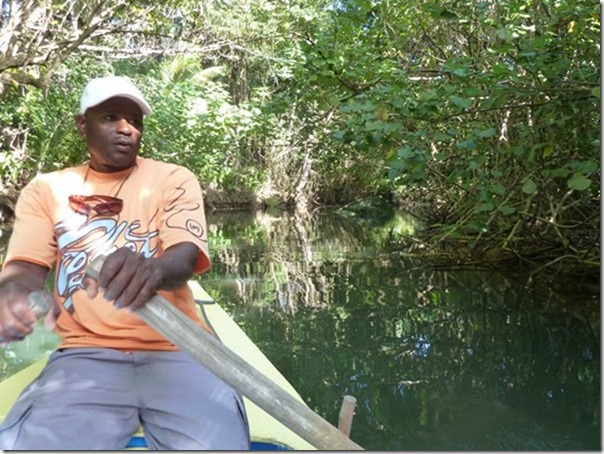 Herons are common along the river, as are land crabs, lizards and a few
harmless snakes
  Tree roots buttress the river banks
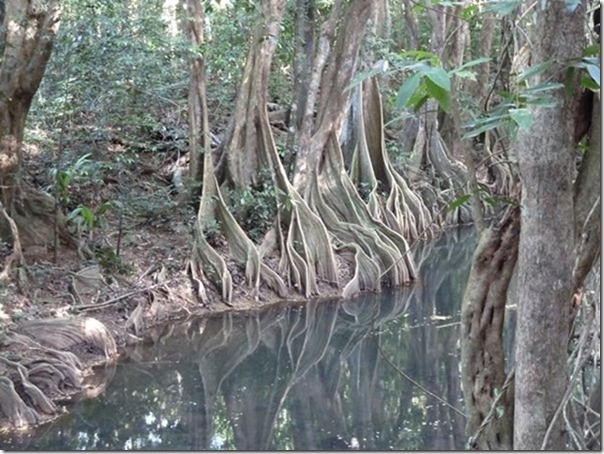 The Ticking Croc Tavern awaits tourists at the head of the Indian River
trip!
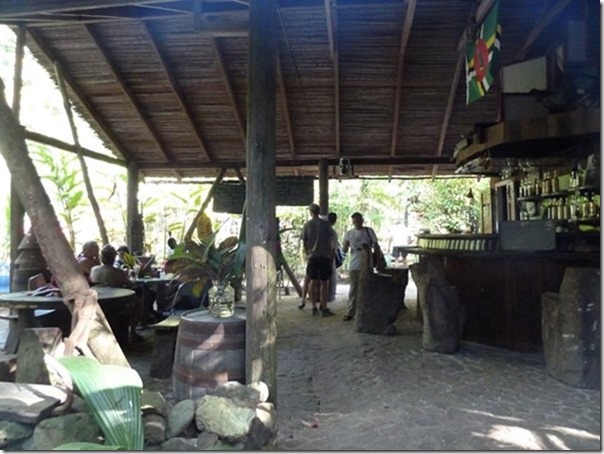 The Cabrits National Park is on the NW coast of Dominica
 The restored Fort Shirley
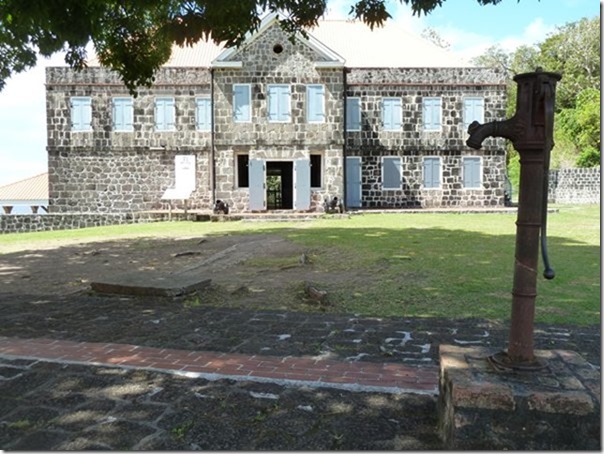 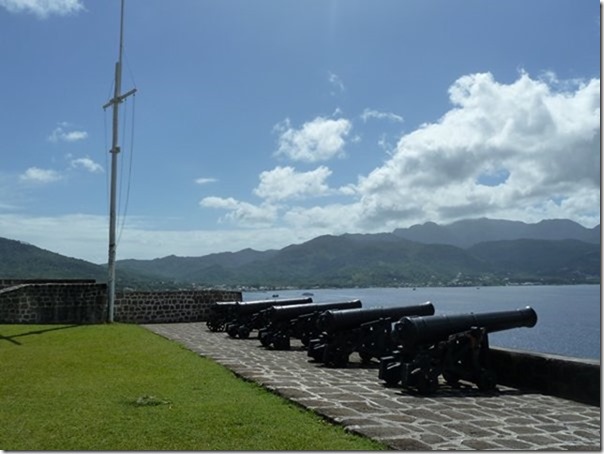 Jungle has overcome the Cabrits Garrison
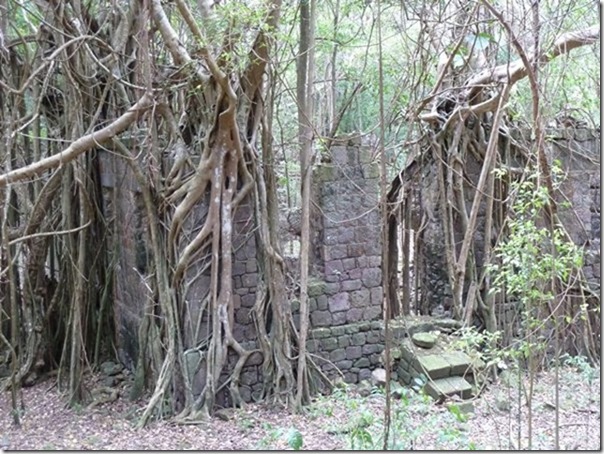 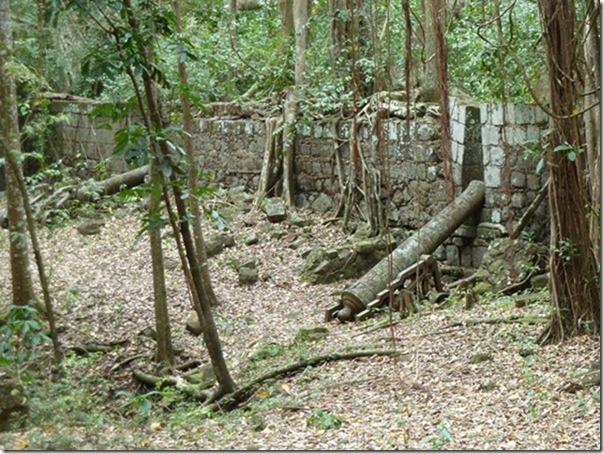  Some local inhabitants view tourists with suspicion, but most are
friendly!
 |